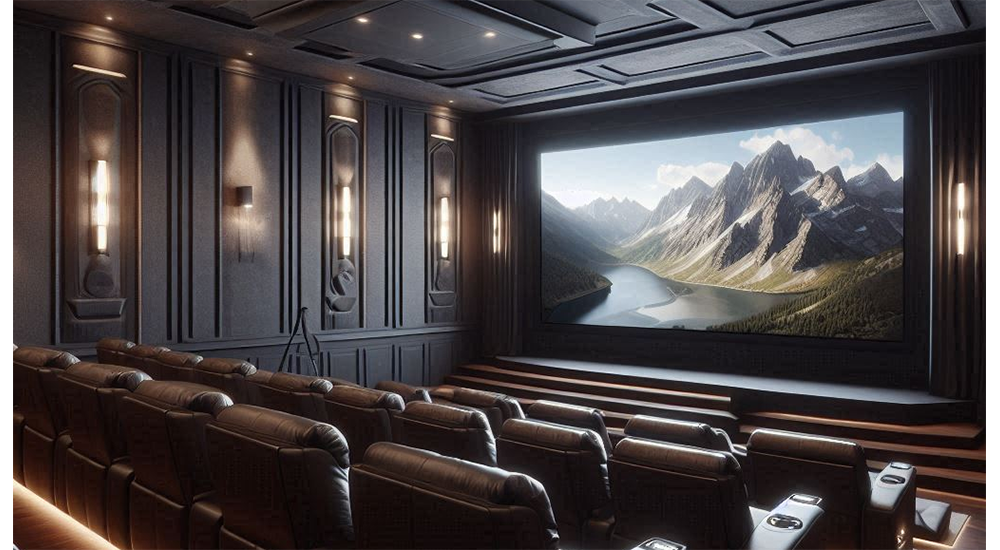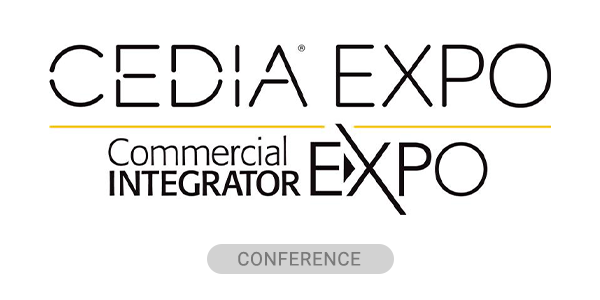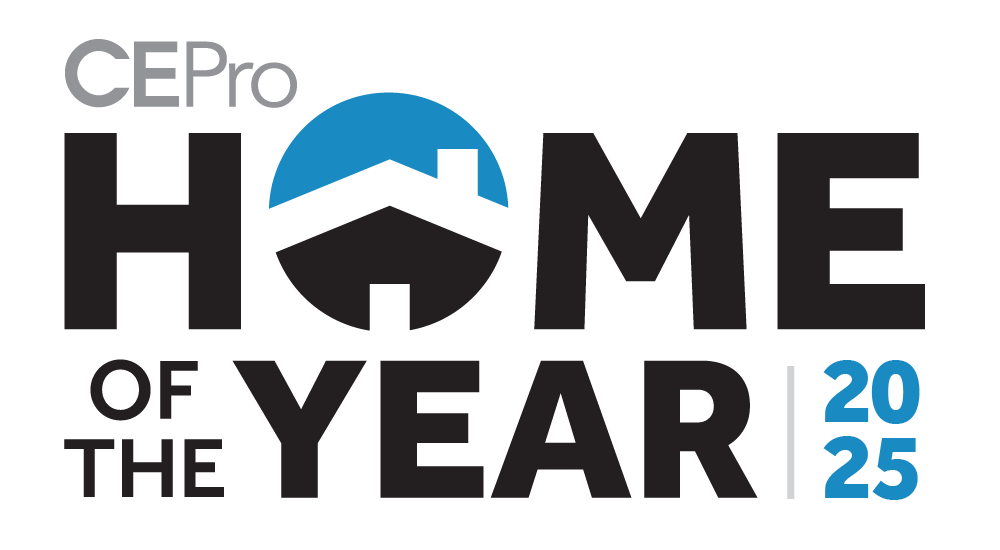For decades, high-end home cinema has been driven by the desire to replicate, or even surpass, the commercial movie theater experience. Today, AV systems in the custom integration (CI) channel are now capable of delivering brighter, sharper images and more immersive audio than ever before. Just when it seems that performance can’t advance further, along comes DCI (Digital Cinema Initiatives). The implications of this seemingly simple acronym are transformative for integration businesses.
Originally developed by Hollywood studios to securely distribute digital movie files to commercial theaters, DCI technology is quickly becoming a coveted differentiator in luxury residential installations. Companies that include Quantum Media Systems, Barco, Christie, Leyard, and Apex Technologies offer products that can help integrators access new opportunities at the highest levels of home entertainment.
“DCI-caliber video walls aren’t simply big TVs,” says Kyle Steele, founder and CEO of Global Wave Integration, who’s been doing DCI projects for some time. This new breed of video wall “represents a fundamental shift in how private cinemas are engineered.” The viewing experience is transformed, as well. “We’re not talking about ‘watching a movie’ anymore; we’re talking about owning the cinematic experience itself.”
Understanding DCI: From Hollywood to the Home
Digital Cinema Initiatives, LLC is a consortium of major motion picture studios, including Disney, Paramount, Sony, Universal, and Warner Bros., that was created to standardize how digital content is encoded, encrypted, and delivered securely to commercial cinemas. DCI-compliant systems meet rigorous technical benchmarks for color accuracy, contrast, bit depth, and content protection.
Until recently, this ecosystem was closed to anyone outside the commercial cinema space. To access DCI content, systems were required to contain a certified projector or LED display, a secure media server, and studio authorization. This exclusivity confined DCI to professional film production and post facilities, but the boundaries are expanding.
As more filmmakers, producers, and entertainment executives bring their work home, demand for private DCI theaters surged. This migration, coupled with the introduction of residential DCI-compliant products has made DCI the new digital entertainment darling among discerning homeowners seeking fidelity and early access to first-run films, often on the same day they premiere in commercial theaters.
For integrators, this is a watershed moment, one that opens the door to a new class of prestige projects driven by next-level innovation and defined by a premium niche where few of their competitors have the expertise to deliver.
The Advantages of DCI
While the hook for DCI is its ability to bridge Hollywood and home cinema, equally significant is the quantum leap in performance the format delivers. Compared to even the highest-end consumer formats like 4K Blu-ray or media servers, DCI delivers up to 10 times the data rate, producing depth, clarity, and realism.
“DCI trumps every consumer format,” comments Ryan Donaher, owner of Apex Technologies. “The picture and sound are on a completely different level. You’re getting the same Dolby Atmos professional mixes and lossless video that directors see in their professional mastering facilities.”
Having these performance attributes means no compression artifacts, color banding, or loss of detail. Every pixel, sound effect, and nuance is preserved exactly as the filmmaker intended—a level of authenticity unattainable with consumer-grade servers or streaming sources.
DCI also upholds the highest content security standards in the world. Every file is encrypted and can only be played on approved systems, ensuring that early-release and first-run titles, traditionally reserved for members of the famed Bel Air Digital Circuit, remain fully protected from piracy. At the same time, it grants high-end clientele the rare privilege of enjoying films privately before their public debut.
Where dvLED Fits into the Picture
The growing demand for larger-than-life visuals in luxury home theaters has made large-scale direct-view LED (dvLED) video walls a legitimate residential category and a new canvas for DCI content. Recognizing these trends, companies that include Quantum Media Systems are developing DCI-compliant LED video wall designed specifically for luxury residences.
“dvLED is one of the fastest-growing segments in AV, but not all LED displays are equal,” explains Hoffman. “DCI certification ensures that what you see is exactly what the director intended, not just a bright, big image. It’s about guaranteeing color and grayscale accuracy at a level most LED brands can’t match.”
Hoffman adds that the rise of HDR content is also fueling the shift to other display solutions.
“Until now, true HDR performance was only possible on smaller OLED TVs. Projectors can’t produce the deep blacks and brightness levels HDR demands,” he notes. “With microLED, we can finally display HDR content at full dynamic range on large-scale screens, with the precision of DCI mastering.”
DCI standards themselves continue to evolve alongside display technology. The organization’s latest HDR-300 nit format, developed for MicroLED displays, follows earlier projection-based standards (SDR-48 nits) and Dolby Cinema’s enhanced format (EDR-108 nits). This progression ensures DCI remains relevant as both cinema and residential technologies advance.
Historical Hurdles in DCI’s Residential Adoption
While DCI’s benefits are undeniable, implementation in residential environments has historically been complex. Apex Technologies set out to simplify that process with the recent introduction of Cinema Hub, a DCI controller that brings professional-grade content management and user-friendly control into the integrator’s toolkit.
Traditional DCI playback relied on text-based interfaces that allowed only basic commands. Cinema Hub, according to Donaher, replaces these with a graphical user interface that integrates with media block servers from Barco, Christie, and Dolby, offering full transport control—play, pause, stop—and high-resolution cover art for an intuitive, cinematic experience.
“Before Cinema Hub, DCI systems were rigid and unapproachable for residential use,” boasts Donaher. “Now, we’ve automated content delivery and made it behave like a modern cinema system, only far better.”
Cinema Hub also bridges DCI playback with common residential sources such as Apple TV and Kaleidescape media servers, ensuring flexibility in multi-source theaters. However, Donaher emphasizes that DCI systems require precision installation and ongoing maintenance.
“You have to understand every detail of the design and calibration,” he explains. “It’s not plug-and-play; it’s a mini commercial cinema built from the ground up.”
What This Means for Integrators
The opportunity for AV professionals is clear: DCI is no longer confined to commercial cinemas or Hollywood insiders. It’s becoming a hallmark of ultra-premium home theaters and media environments where image and sound quality are paramount.
“People just want the best possible experience,” Donaher observes. “DCI is it.”
By mastering DCI system design and calibration, integrators can position themselves as subject matter experts in one of the most exclusive and technically sophisticated sectors of the AV industry. This expertise not only differentiates their business but also connects them with elite clientele who value authenticity, innovation, and access.
Hoffman adds that DCI benefits extend beyond film playback.
“When you achieve DCI-level color accuracy and grayscale performance, all content—TV, sports, gaming—looks better,” suggests Hoffman. “And because studios are starting to use microLED in post-production, owning a DCI-compliant display means you’re literally watching on the same technology used to finish the film.”
Final Considerations
It is important to remember that in most cases manufacturers do not approach the market in the same way. In the case of DCI, certification for manufacturers is technically demanding and costly—so it is typically reserved for the top tier of the market. For integrators ready to elevate their craft, however, the standard and its products present a powerful opportunity for integrators looking to service luxury homeowners.
“These systems demand architectural precision. Every millimeter of wall flatness, heat management, and panel alignment matters,” acknowledges Steele. “Proper thermal design, redundant power circuits, and pixel-level calibration, plus layers of security and hardware verification add workflow complexity that goes well beyond typical AV.”
For those willing to embrace the challenge, DCI opens doors to projects that merge technical mastery with prestige, allowing integrators to distinguish themselves in a competitive industry.
As residential cinema continues to evolve, DCI will not only set the benchmark for performance and authenticity but also redefine what homeowners can expect from their private entertainment environments.
“The integrators who master this space now will define what high-end home theater looks like for the next decade,” adds Steele.
Lisa Montgomery is account manager & copywriter for KMB Communications.
















